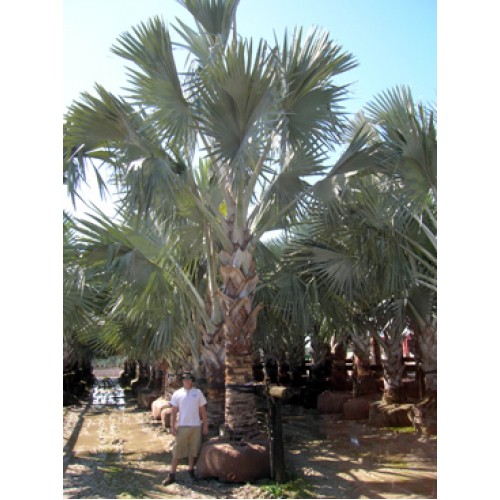Wholesale Bottle Palm / Hyophorbe lagenicaulis Palms
 All the way from a small trio of islands called the Mascarenes in the
Indian Ocean, the Bottle palm, scientific name Hyophorbe lagenicaulis, brings a
truly unique look to any tropical landscape. The remote geography of these
islands near Madagascar has led to the evolution of species not found readily
in other areas of the world.
All the way from a small trio of islands called the Mascarenes in the
Indian Ocean, the Bottle palm, scientific name Hyophorbe lagenicaulis, brings a
truly unique look to any tropical landscape. The remote geography of these
islands near Madagascar has led to the evolution of species not found readily
in other areas of the world.
Luckily, the Bottle palm can be cultivated and grown here in the southern United States. It shines as an accent plant in a yard or in the midst of other plantings in a large garden due to its eye-catching shape and shorter height. Adult specimens reach a height of around 12 feet maximum.
What makes the Bottle palm so interesting is the shape of its trunk. The lower part of the trunk grows to particular width and then gracefully curves inward toward the upper trunk just like the neck of a bottle. Some are more tapered than others. The natural variations just add to the interest.
The scientific explanation may have something to do with storing water to keep the fronds alive in times when precipitation levels drop. As Bottle palms do best in soils with efficient drainage, such as sand that mimics their beach origins, the need to store water makes sense.
This also means that when this type of tree is planted ina yard or garden, the home owner or landscaping crew needs to water it regularly. Since this is a truly tropical plant, zones 10b and 11 are recommended regions for planting. Apply light amounts of time-release fertilizer in the three warmer seasons. Bottle palms prefer a fertilizer with higher potassium ratios to the other minerals usually included.
Most will survive winter in the extreme southern states. However, if there is risk of frost or freeze at all, the beautiful fronds of the tree will get damaged. It is best to avoid planting any where this is probable. If such damage does happen, wait until springtime to trim off the discolored or dead fronds. They may protect other fronds from meeting the same fate.
